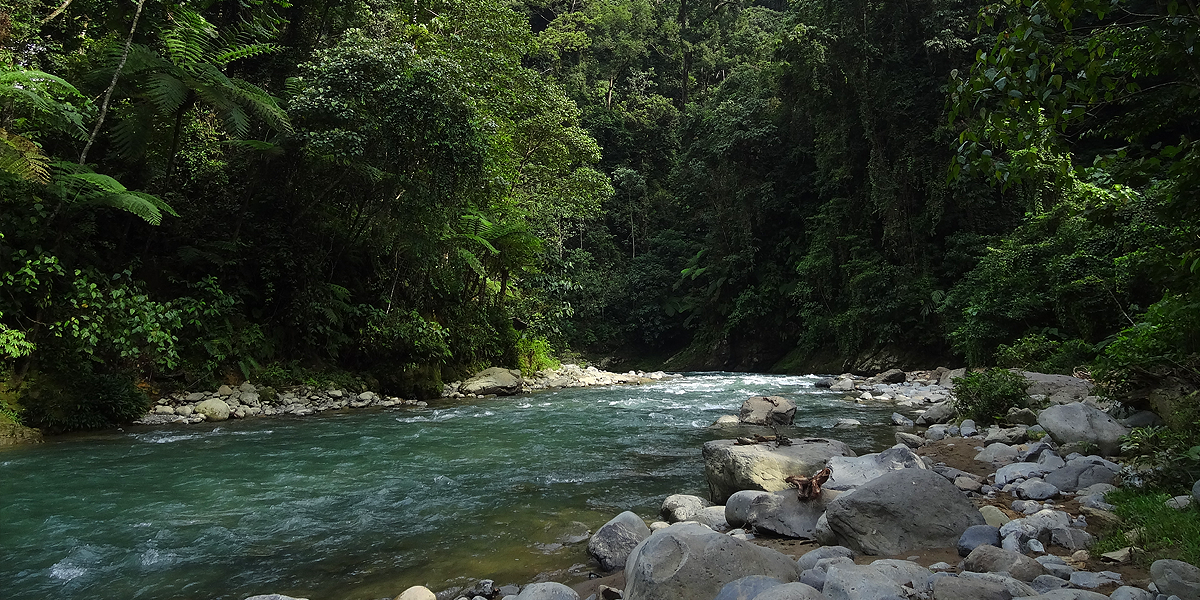Why Indonesian Rainforests?
When taking a birds-eye view of the three major tropical rainforests in the world, Southeast Asia’s rainforests, and those found in Indonesia in particular, are ground zero for biodiversity loss, exploitation of forest peoples, and climate emissions from deforestation. Containing the largest expanse of rainforest in all of Asia, Indonesian rainforests are home to hundreds of distinct groups of forest peoples with their own Indigenous languages and over 3,000 animal species including critically endangered Sumatran tigers, pygmy elephants, java rhinoceros and orangutans.
As recently as the 1960’s, about 80 percent of Indonesia was forested, but with one of the highest deforestation rates in the world, less than half of the Indonesia’s original forest cover remains. The main drivers of deforestation and land grabs from forest peoples in Indonesia are the forest products industry – including pulp and paper and other forest products like plywood – and oil palm plantations.These products are mainly produced to feed international demand for these commodities.
Although estimates vary, studies suggest that about one million hectares (2.4 million acres) of Indonesian rainforest is cleared and lost each year, with about 70% occurring in forests on mineral soils and 30% on carbon-rich peatland forests. The scale of destruction of Indonesia’s rainforests is having globally significant impacts on the climate system. Indonesia’s rainforest and peatland ecosystems store billions of tons of carbon, and their destruction releases huge emissions into the atmosphere. Indonesia is now the world’s third largest emitter of greenhouse gasses after the U.S. and China. However, unlike these nations whose emissions are largely due to burning fossil fuels, 80% of Indonesia’s emissions profile is from rainforest and peatland degradation and loss.
Tell APRIL CEO Sukanto Tanoto to stop pulping Indonesia’s rainforests for paper
Why Pulp & Paper?
Pulp from cleared rainforests and the pulp wood plantations that replace them is made into cheap copy paper, books, tissue, packaging, toilet paper and even luxury shopping bags. It is also used to make rayon, a fabric found in a wide array of clothing and apparel and sold to consumers in the United States, Europe and Asia.
Asia Pulp and Paper (APP) and Asia Pacific Resources International Limited (APRIL), Indonesia’s largest and second largest pulp and paper companies, have historically been responsible for most of the rainforest loss from pulp and paper. Asia Pacific Resources International Limited and its affiliates like Toba Pulp Lestari, which makes pulp for rayon, are clear cutting and draining huge areas of Indonesia’s diverse rainforests and peatlands.
These logging giants then convert the degraded land into monoculture acacia and eucalyptus pulp wood plantations to make paper products and apparel. This deforestation is devastating communities and their livelihoods and driving species like the Sumatran tiger toward extinction. The Indonesian pulp and paper sector is one of the biggest threats to the remaining large peatland and natural forest landscapes in Sumatra and Borneo. Market and investor pressure and public profile are helping to catalyze shifts in Indonesia’s political economy by pushing private and government pulp and paper sector interests to develop alternative business models. These models prevent further conversion of rainforests and peatlands to pulpwood plantations, respect and uphold the land and human rights of forest communities, and remedy the legacy of rights violations and deforestation caused by the industry.
Stop Fashion from grinding up forests to make clothes.
